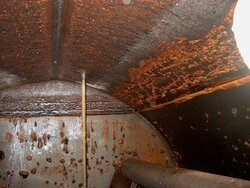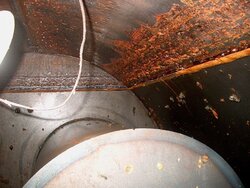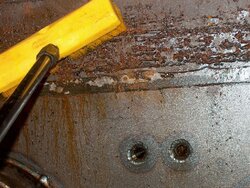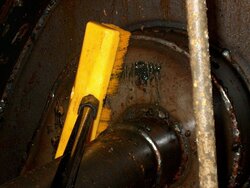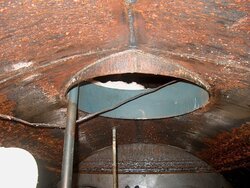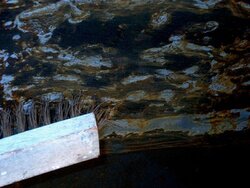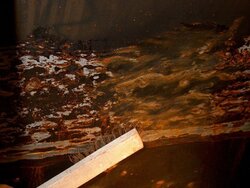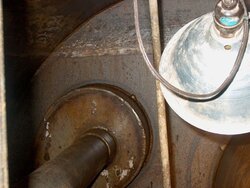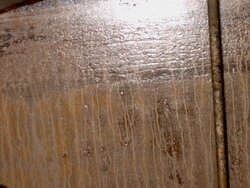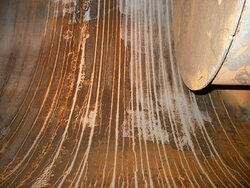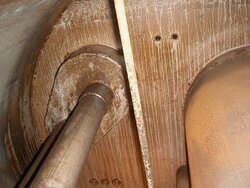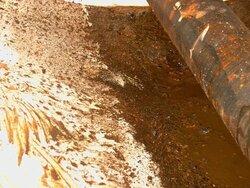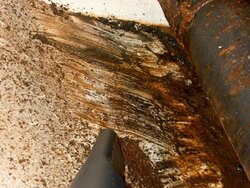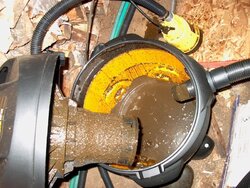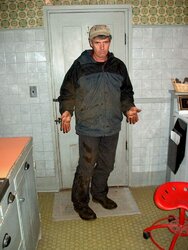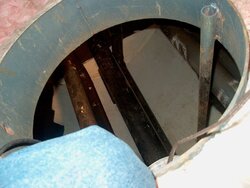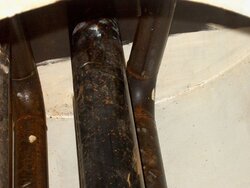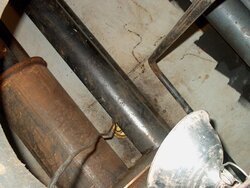I have wanted to to share this since it happened last November. I want this NOT to be a Garn bashing session although I was VERY pi$$ed when it happened. So I have waited, cooled off and checked things out so as to figure out and share WHY it happened and what we did about it, so others (including Dectra, Garn dealers and PrecisionChem) could benefit and save themselves some hassle. After all, education and sharing is what the Boiler Room is all about.
So, I got the Garn online in Oct of 09. Followed all recommended start-up/flush/add chemicals/fill/water-testing (done in Jan/10) procedure. Water test (chemical analysis only, no bio test) results were ok so ran it all Winter, shut it down in the Spring, walked away and let it sit idle all summer. In the Fall, last November, in between getting wood put in and other getting-ready-for-winter farm stuff I drew a water sample from a purge valve near the heat-exchanger in my basement and got it sent of to PrecisionChem. There is a spot on the bottom of the water test form for remarks and comments. I had put in there what I could see through the manway and that was that the water was clear enough to see the flue tubes but had a brown color and that I could see brown foam floating at the water line against the tank wall. The results, including a bio test this time, came back A-OK!! But, because of the comments, they recommended draining, flushing and re-filling with new treatment.
When it was drained it looked bad so I snapped these pics and emailed them to Mike at PrecisionChem. He responded right away, set-up a time to call me, we discussed a plan of attack or "path to recovery"as he put it. He said the pics showed for sure that there was bacteria in the water and excessive steam production at the waterline had created an environment that caused corrosion.
So, I got the Garn online in Oct of 09. Followed all recommended start-up/flush/add chemicals/fill/water-testing (done in Jan/10) procedure. Water test (chemical analysis only, no bio test) results were ok so ran it all Winter, shut it down in the Spring, walked away and let it sit idle all summer. In the Fall, last November, in between getting wood put in and other getting-ready-for-winter farm stuff I drew a water sample from a purge valve near the heat-exchanger in my basement and got it sent of to PrecisionChem. There is a spot on the bottom of the water test form for remarks and comments. I had put in there what I could see through the manway and that was that the water was clear enough to see the flue tubes but had a brown color and that I could see brown foam floating at the water line against the tank wall. The results, including a bio test this time, came back A-OK!! But, because of the comments, they recommended draining, flushing and re-filling with new treatment.
When it was drained it looked bad so I snapped these pics and emailed them to Mike at PrecisionChem. He responded right away, set-up a time to call me, we discussed a plan of attack or "path to recovery"as he put it. He said the pics showed for sure that there was bacteria in the water and excessive steam production at the waterline had created an environment that caused corrosion.


